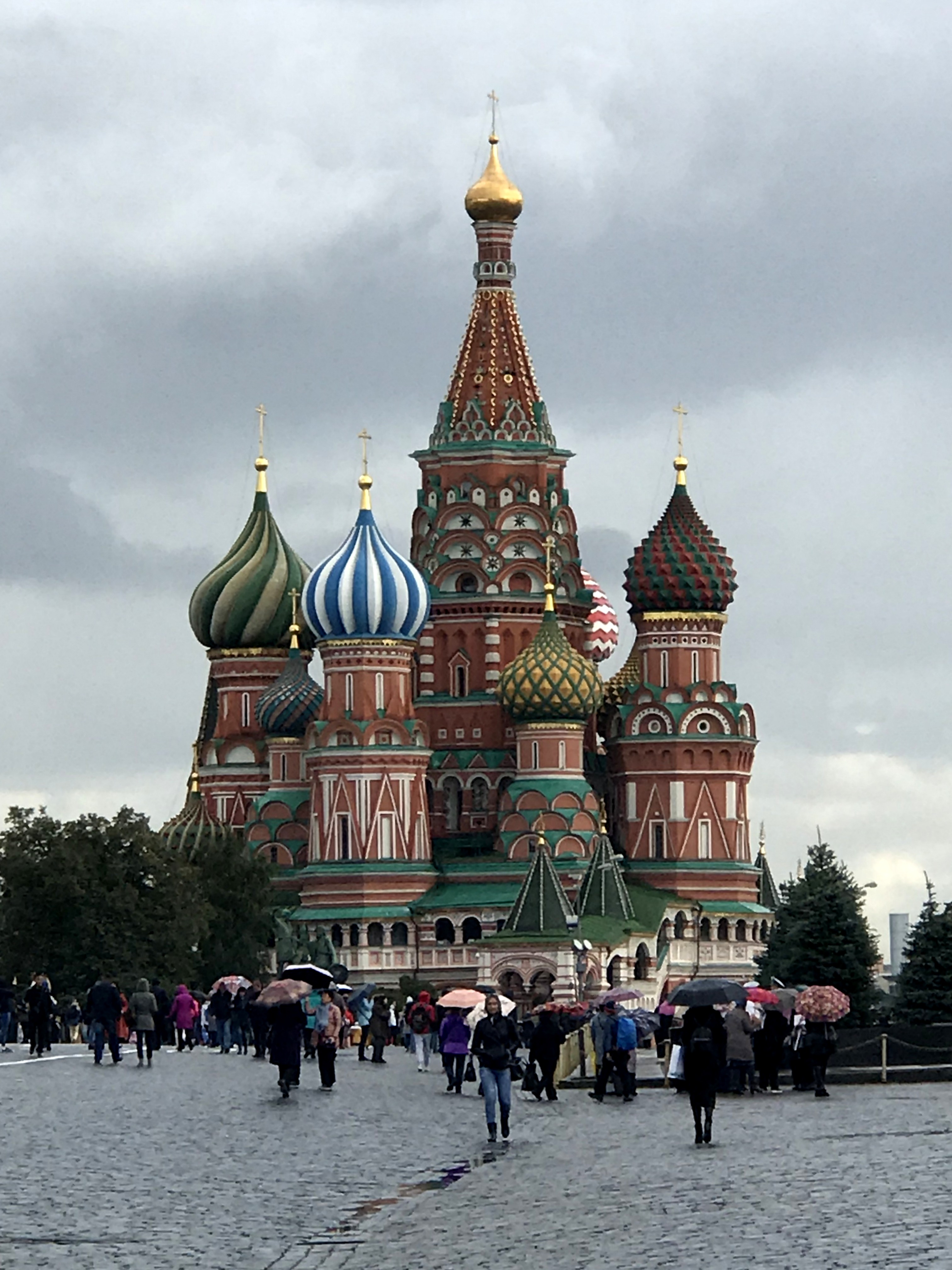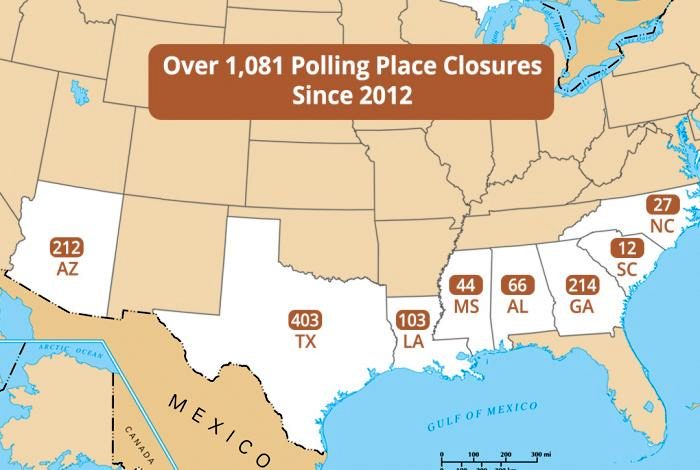The Daily Escape:

St. Basil’s, Red Square, Moscow, RU. It was built in 1561. – 2018 photo by Wrongo
Welcome to Saturday! Forget about Kanye hugging the Orange Overlord, we have bigger fish to fry.
Yesterday, we talked about how state legislatures with help from the courts, have been disenfranchising minorities. This is likely to reduce turnout in the 2018 mid-terms, as studies have shown in the past, and despite encouraging polls, if someone can’t vote, nobody can be sure who will win in the mid-terms.
So today, we take a closer look at how some states have systematically worked to close polling places after the Supreme Court’s Shelby County vs. Holder decision that stopped federal oversight of election practices in states with a history of Jim Crow practices.
Prior to the Shelby decision, Section 5 of the Voting Rights Act of 1965 (VRA) provided a process to ensure that jurisdictions known to engage in voter discrimination weren’t using budget cuts or voter modernization as arguments to disenfranchise people of color. Under Section 5, jurisdictions had to demonstrate that saving money by making changes to polling places did not disenfranchise voters of color. Now Section 5 is no longer useful for the protection for minority voters.
One reason is that Shelby triggered a fundamental shift in who was responsible for protecting minority voters, from the federal authorities, to the individuals who believed they were wronged. The cost and burden of proof that local election laws are discriminatory, is now borne by those least able to afford it.
This map makes it clear that the states formerly covered by the VRA are engaging in precisely the kind voter suppression that would have been impossible before the Supreme Court’s Shelby decision:

Fewer polling places leads to longer lines, which will dissuade some people from voting, the Bipartisan Policy Center, a Washington, DC think tank found. This means election officials can affect the outcome of an election by manipulating the number and location of polling places.
And these efforts do not only happen in the Deep South. This year, Indiana removed 170, mostly Democratic voting precincts from Lake County, home to the state’s largest Latino and second-largest Black communities. The Secretary of State said they were simply updating the map to reflect new demographic data, while local Democrats said it keeps African Americans and Hispanic voters from the polls.
According to Pew Research, other efforts are underway in counties in Illinois, Kansas, Mississippi, Ohio and Wisconsin to move thousands of voters to new locations: (emphasis by Wrongo)
Some voters in Barton County, Kansas, now will have to drive 18 miles to vote in November’s election because of polling place consolidation. In the past three decades, the county has gone from 40 polling places to 11. The main reason, said County Clerk Donna Zimmerman, is cost.
Local election officials responsible for closing polling places often say that the closed locations were too expensive, underused, or inaccessible to people with disabilities. Often, local election officials fly under the radar, sometimes not even notifying voters in their jurisdictions of changes in polling locations.
This year, Georgia put the voter registrations of about 50,000 voters on hold, due to a policy implemented by Georgia Secretary of State Brian Kemp, who is also the Republican candidate for governor in next month’s election. Of the 53,000 applications in limbo, 70% are from African-Americans, according to the Associated Press, even though Georgia is approximately 32% black.
So the guy running for governor is ALSO overseeing the election. He tried to close 3/4 of polling places in predominantly black Randolph County this summer. Kemp is in a close race with Stacy Abrams, an African-American. You be the judge of what’s really going on.
Americans say we live in a democracy. But, with gerrymandering and vote suppression, we have to remain vigilant if we are to keep both our civil rights, and our Constitution, intact.
Enough for today! Take a step back, unplug, and chill a bit, because it’s Saturday, the Wrongologist’s day for a little Soothing.
Let’s start by brewing up a yuuge cuppa Ethiopia Hambela Natural from Chicago’s Big Shoulders Coffee. It is said to be deeply sweet, with flavors of raspberry, dark chocolate, and cedar, along with a syrupy mouthfeel.
Now, go and sit by a large window, and take in the changing fall colors and the nip of cool air. Put on your best headphones and listen to “Autumn Leaves” by Eva Cassidy, recorded live at Blues Alley in Washington, DC in 1996. Cassidy died far too young at 33, in 2006.
Those who read the Wrongologist in email can view the video here.

I only heard Eva Cassidy’s music after she died. She was a great interpreter of songs. In an era where we look to singer songwriters, in fact we need interpreters too – and songs worth re-singing. I admire Paul Simon, but much of his music cannot be easily re-sung by another.